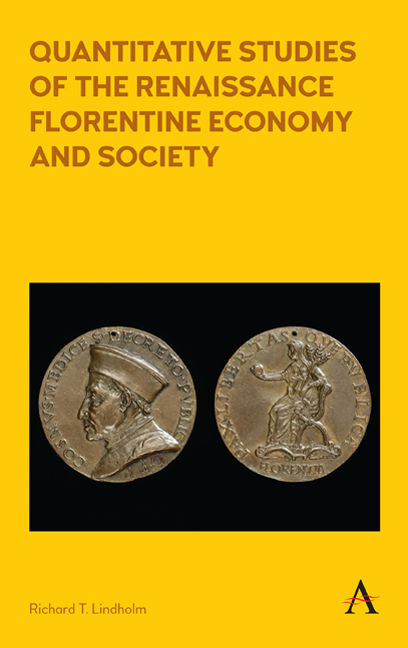Summary
This book touches on a wide range of subjects: economics, finance, geography, history, mathematics, sociology and statistics. The topics and methods in this book were chosen in order to demonstrate the diversity of topics and potential methods available for quantitative studies.
Each of the nine studies in this book tackles a question in Renaissance Florentine economic and social history using a suitable quantitative method. The results from these individual studies can be combined to reveal larger themes. Several Renaissance Florentine themes recur. Above all is that the city's economy and society were dynamic. On the one hand, unfolding events are discussed that see Florentines fleeing the plague, facing evolving interest rates and increasing their demand for owning homes. On the other hand, the wool industry shows that the underlying economic and social structure itself was dynamic.
Further, Florentine society was one of flexibility subject to constraints. For example, not everyone owned a home, but homeownership was within the reach of many households. Women worked in the market with equal pay for equal work, but they were limited, though not prevented, in how they could work by family and by law. Although a popolo minuto household could attain significant wealth, it was still rare for one to reach the levels of the arti maggiori. Related to this flexibility is the important impact of risk. The recurring plague, the wide interest rate swings and the exceptional risk-minimization efforts taken by the wool industry all highlight this important feature of life in the Renaissance.
Finally, the inequality of Florentine wealth was real, but it did not divide society. The wealth difference that distinguished the arti maggiori from the popolo minuto was neither manifested in segregated homogeneous neighborhoods nor did it stop Florentine from wanting a more equal society. Their support for both progressive tax rates and a homeownership exemption in the catasto resemble contemporary tax policies more than the export and poll taxes common in the period. The irony is that the increased homeownership that resulted was paralleled by an increased spending on art and architecture. The latter has attracted the notice of historians much more than the former, and this has obscured the underlying process.
- Type
- Chapter
- Information
- Publisher: Anthem PressPrint publication year: 2017



